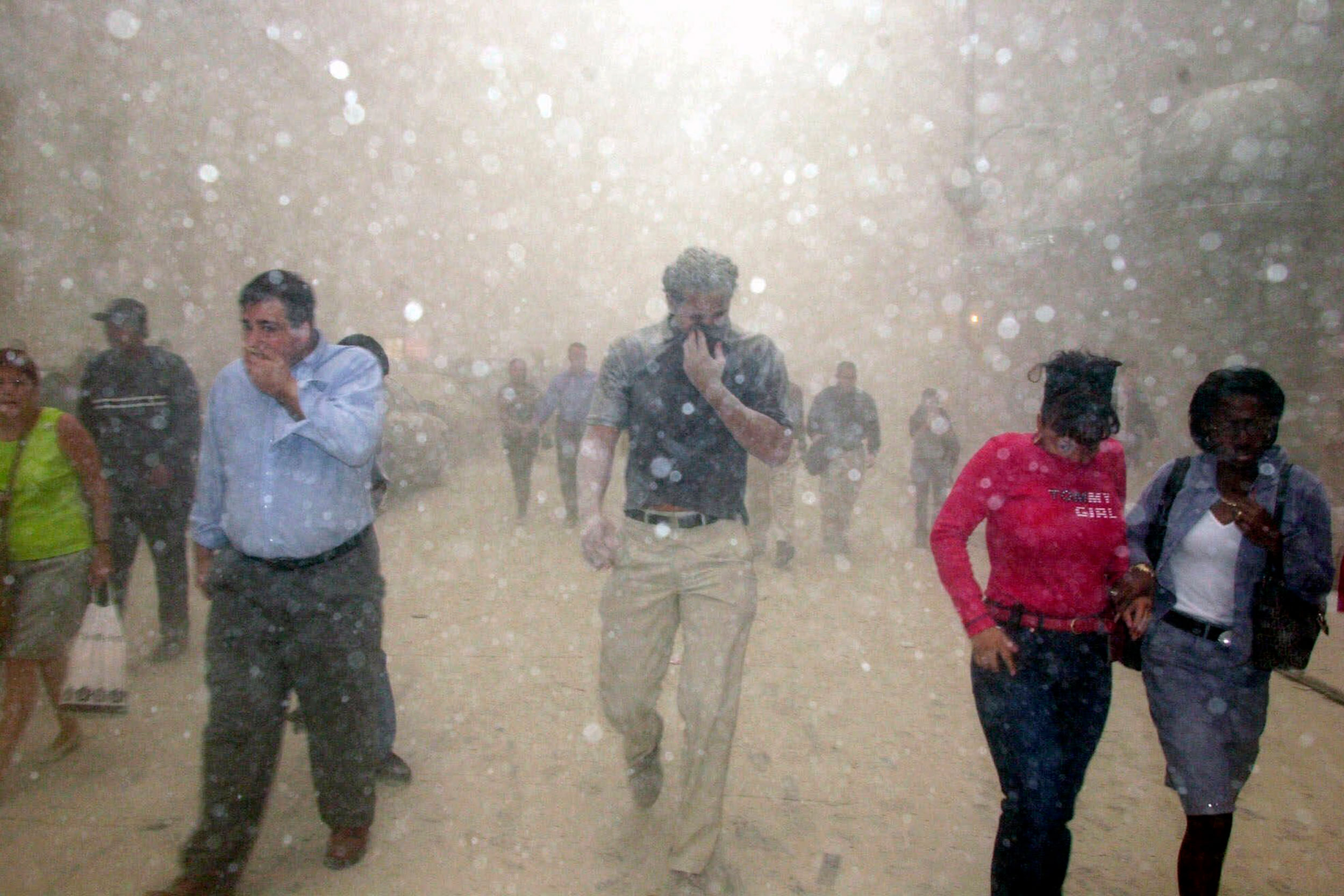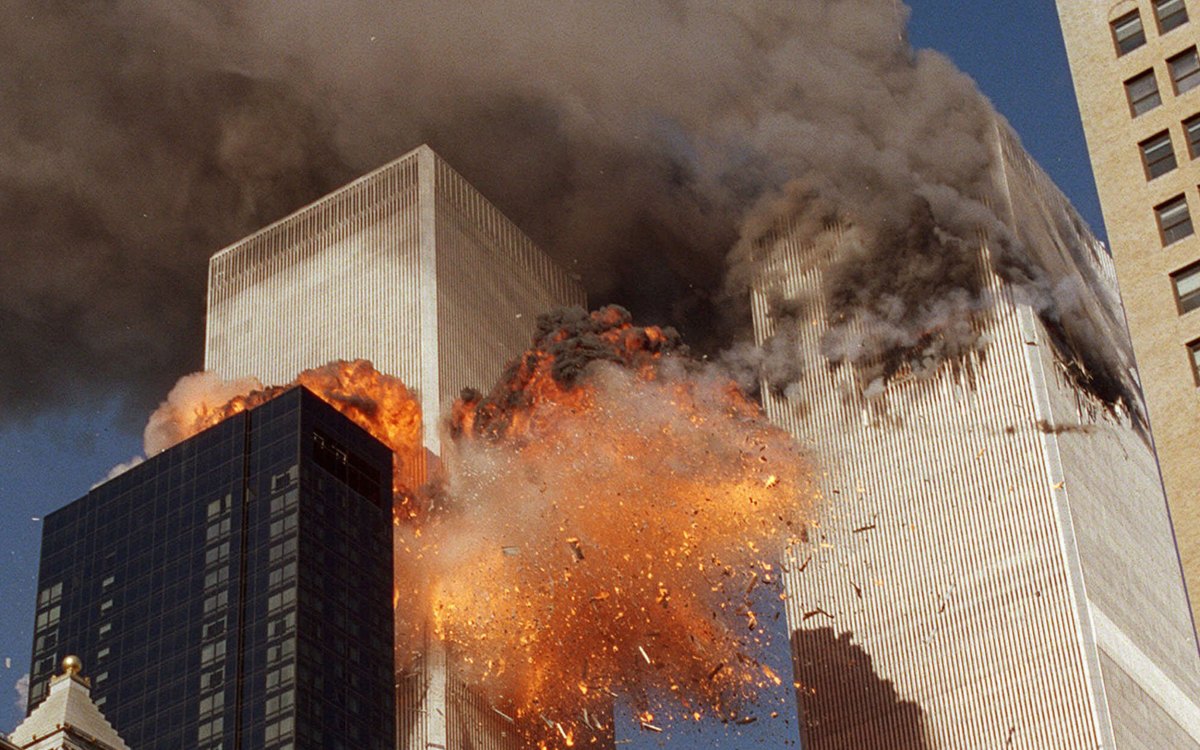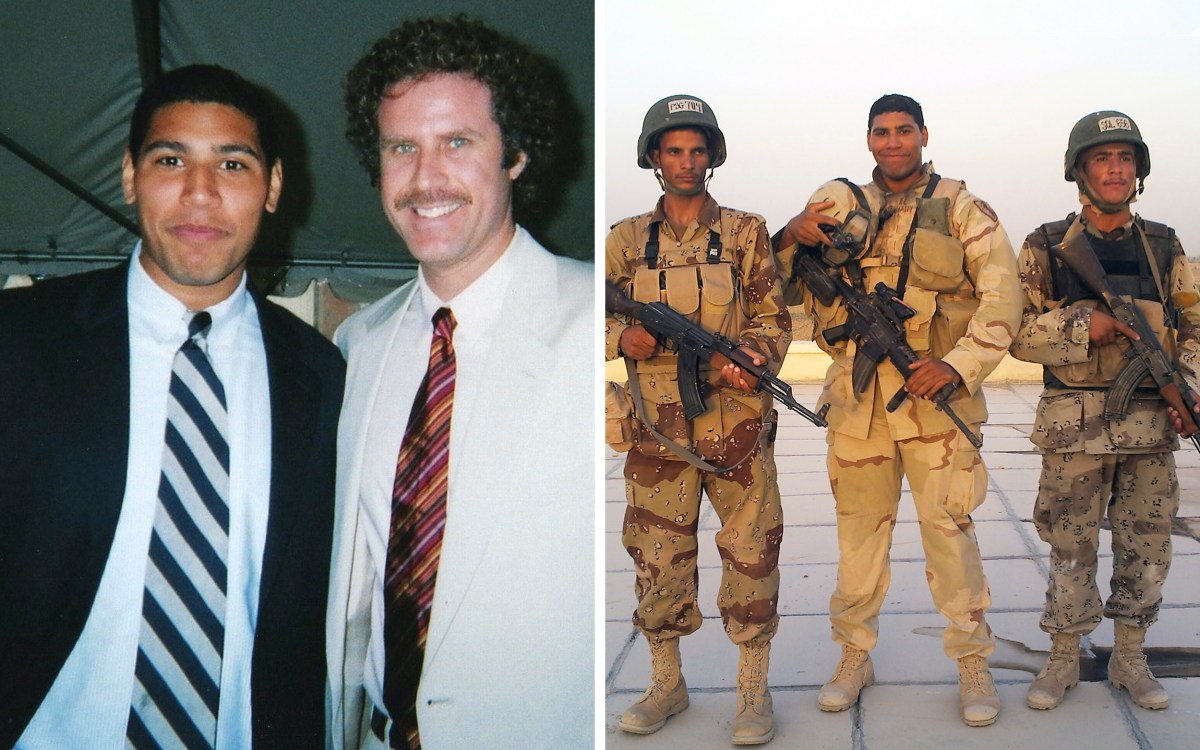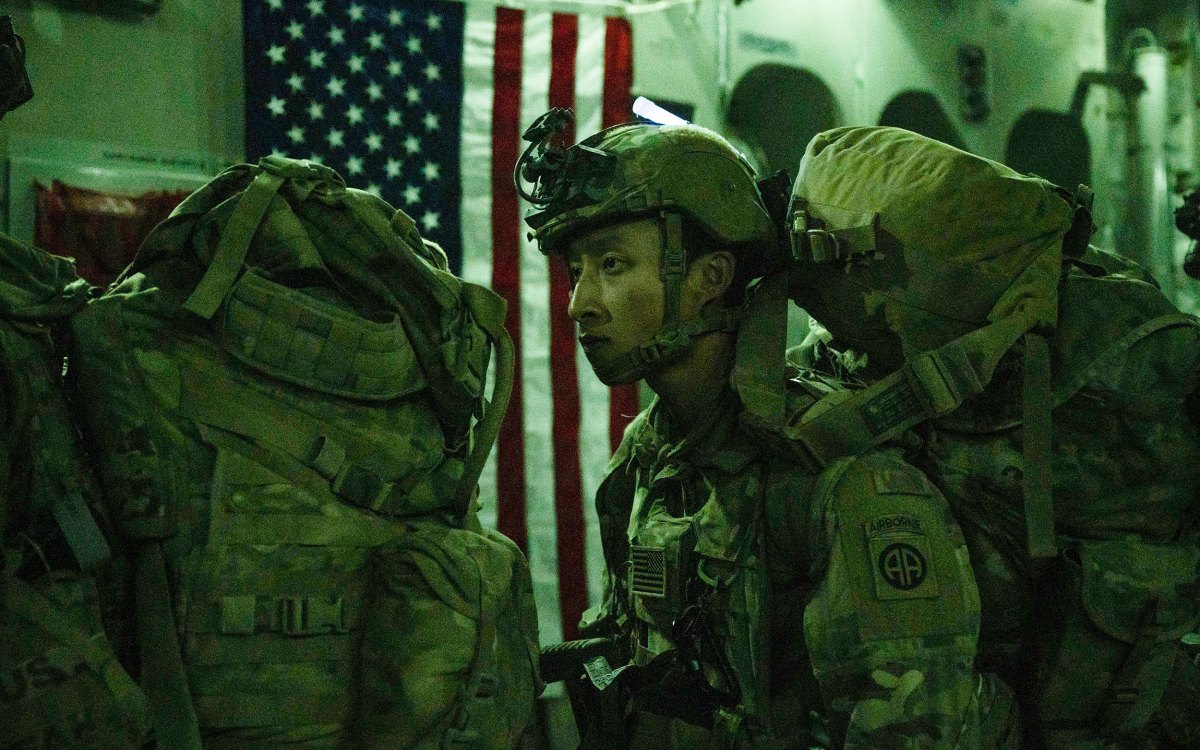
People tried to escape the ash and falling debris from the collapsed World Trade Center’s twin towers.
AP File Photo/Suzanne Plunkett
New York minute
She opened her notebook, ready for a day of high fashion. Then, mayhem.
When the planes hit the twin towers, I was a reporter covering New York Fashion Week, waiting for the first show of the day to begin at Bryant Park in midtown Manhattan. In the context of a world-changing terrorist attack, it’s hard to imagine a job feeling any more frivolous than the close study of hemlines and necklines.
“Someone crashed a plane into the World Trade Center,” one of the Fashion Week staffers, whose job it was to hand out the gift bags, yelled. The words didn’t quite sink in, but when I went outside, a news ticker clarified and confirmed the horror. I raced back to my hotel to change into sneakers and gather my courage — fearful for my safety, and already anticipating being called out for the war correspondent I wasn’t. I was also thinking of Madeline.
I had been a Boston Herald reporter, mostly covering fashion, for five years, but on 9/11 I was still new to motherhood. Ten-month-old Madeline didn’t smile easily in those early days, and the role of mother was one in which I greatly lacked confidence, patience, and preparedness —exactly how I felt when my editor told me, in an overwhelmed but supportive voice, to catch up to the Herald’s photographer, who was on his way to the towers.
It’s hard to describe that day, and the best I’ve come up with is that I was always doing something — always in motion — while somehow always watching myself. The streets were filled with honking cars and dazed New Yorkers rushing past me to head uptown. I had never in my life run toward danger, and had never wanted to. The 3½-mile sprint to Wall Street left me soaked in sweat. Even today I can picture the beautiful blue sky, a late-summer stunner full of the possibility that always comes with September.
I will remember forever the middle-aged businessman with the receding hairline, still carrying his briefcase and covered in ash. He was in shock, I think, more about his own survival than the scale of the trauma. In the chaos, I never found the photographer and was forced to work alone with a notepad, pen, and a cellphone that died that evening, though not before I’d relayed my notes to a night editor who was kind and patient and never made me feel unqualified. I interviewed emergency workers and survivors, and spent hours into the night at the staging area with the Red Cross. By midnight, I was coated with dust and ash, and immersed in memories of those yet to be counted.
The next day, my photographer and I united to interview emergency responders and countless family members desperately searching for loved ones. Manhattan was at a standstill and there was no life south of Canal Street, so we trekked on foot — and once queasily on the subway — from midtown to St. Vincent’s Hospital and then to shelters set up in schools and community centers for those who couldn’t go back to their homes or hotels. In one of the most surreal moments, we visited a makeshift morgue on the Hudson River piers, where just two nights before I had attended Marc Jacobs’ spring 2002 fashion show.
I worked for three days before a team of Herald reporters arrived in New York. When I got back to Boston, at 3 a.m., I went straight to Madeline’s crib and watched her sleep for a long while.
As a writer, I have always loved telling stories about people. But even 20 years later, I can’t talk about 9/11 without tearing up or feeling like my small part of that enormous story wasn’t all that important. The photographer I worked with left journalism. I kept my suit from that day, but I never had it cleaned.







